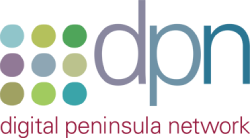The structure of your website pages and posts are incredibly important. The better your site structure, the better your chance of ranking higher in the search engines. Every website has some “structure.” It might be a rigorous and streamlined structure, or it may be a disorganized jumble of pages. If you are intentional and careful with your site structure, you will create a site which enhances your searchability, readability and accessibility.
Good site structure means improved user experience
As you know, the more appealing your site to users, the more appealing it is to search engines, too. Google’s algorithm uses information from ‘searchers’ to rank your site. If your site has poor Click-Through Rates (CTRs) and low dwell time, it will not perform well in the Search Engine Result Page (SERPs). By contrast, when a user finds a site that they like — i.e., a site with great structure and they don’t bounce out – they stay longer. An accurate site structure can reduce bounce rate and improve dwell time, both of which will lead to improved rankings.

How do we improve structure practically?
This is another paragraph. In order for us to have structure in our page – which is loved by Google and Accessibility support for screen readers – we should use headings, subheadings and paragraphs. It also makes the page easier to read which is good for everybody.
Repeated structure points are fine
I don’t have to keep going down the heading styles. I can reuse a heading level if I need to. Please note that Google believes that words that appear in your heading style must be important to your topic – so getting some of your keywords in Headings is supporting your organic Search Engine Optimisation (SEO).
Keywords
Every business has keywords or key phrases. These are words and phrases that users input into a Search Engine to locate your kind of business / products / services, even if they don’t know you exist. These keywords and phrases should be scattered around your whole website like herbs on a salad – you wouldn’t want to find a clump of them! To find out more about SEO have a look in the DPN Moodle.
Accessibility
Visuals don’t tell the whole story. We use colour and font size to draw sighted users’ attention to the most useful parts of the content, like the navigation menu and hyperlinks, but what about visually impaired people for example, who might not find concepts like “underline” and “large font” very useful?
In WordPress, using the appropriate blocks enables the HTML code to mark-up sections of content based on their functionality, and assistive technologies like screen readers can recognise those elements and help with tasks like “find the main navigation”, or “find the main content.” This is particularly important with images – as computers cannot read images, so we need to add ALT text or ‘alternative text’ with every image. This is a description of the image in sentence format, foremost for screen readers to ‘read’ to their user. We also know that Google reads this alternative text, so it’s another place to pop in a keyword or key phrase – if appropriate.
Friendly article with some planning tips on this subject available at the Writers Cookbook
The technical reasons for page structure
Well-structured content allows more efficient navigation and processing. Use HTML and WAI-ARIA to improve navigation and orientation on web pages and in applications. Some of the processes are done automatically for you in WordPress – your CMS (Content Management System)
Page Regions: Identify and mark up regions on web pages using HTML5 and WAI-ARIA roles.
Labeling Regions: Label regions to allow users to distinguish and access them.
Headings: Add headings and nest them logically to label sections of web pages according to their relationships and importance.
Content Structure: Mark up the content on a page in a way that uses appropriate and meaningful elements.
Why is this important?
Pages with well-structured content are essential for many web users, for example:
- People with cognitive and learning disabilities can more easily find and prioritize content on the page.
- People using screen readers can skip to the main content directly and navigate to sections that are important to them.
- Keyboard users can browse pages and their sections more efficiently. Otherwise, users have to press the tab key multiple times to navigate through all links in each section.
- People using software that only shows the main content of a web page, such as people with cognitive disabilities, will receive better results if the page structure is correctly marked up.
- People with visual impairments, including people with low vision, have cues that provide orientation on the page and in the content.
- Mobile web users often have access to a so-called “reader” or “reading” mode that will only show the main content of the page if it is correctly marked up.
- People using certain browser plugins can use landmark roles to jump to specific sections on a page.
- There are additional benefits to a good, accessible page structure, beyond those experienced by people with disabilities. As an example, search engines can use the data to better index the content of a page.
Find out more at: https://www.w3.org/WAI/tutorials/page-structure/

Leave a Reply